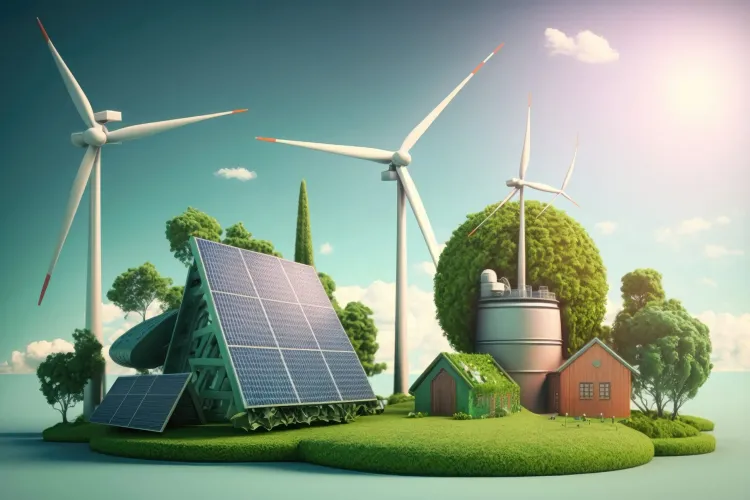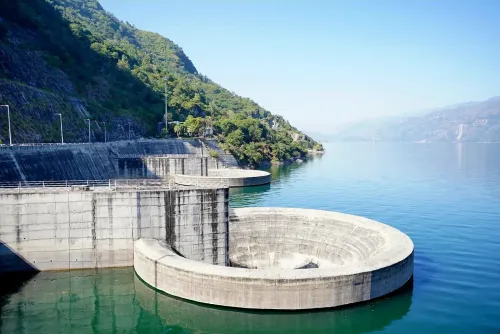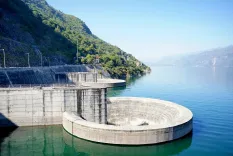India's Per Capita CO2 Emissions Rank Among Lowest Worldwide as Renewable Energy Capacity Expands

Synopsis
Key Takeaways
- India is the world's fifth-largest economy with low per capita CO2 emissions.
- Current per capita CO2 emissions in India are just 1.9.
- India aims to add 500 GW of renewable energy by 2030.
- In 2024, total renewable capacity reached 209.44 GW.
- Solar energy contributed significantly to the growth of renewable capacity.
New Delhi, March 9 (NationPress) India, which has ascended to become the world’s fifth-largest economy, also distinguishes itself as a nation with some of the lowest per capita carbon dioxide (CO2) emissions in the world, successfully balancing economic growth with sustainability and transitioning to renewable energy at an impressive pace.
As per data gathered in the Hinrich-IMD Sustainable Trade Index (STI), India’s per capita CO2 emissions stand at just 1.9, while Canada registers 15.2, Australia 15.1, and the USA 14.4.
Countries following include Russia with 13.3, South Korea at 12.3, China with 8.9, Japan at 8.6, New Zealand with 6.6, and the UK at 5.
The Hinrich-IMD Sustainable Trade Index (STI) evaluates the ability of 30 global trading economies to participate in trade sustainably, utilizing 72 indicators across economic, social, and environmental dimensions, offering valuable insights for policymakers and businesses alike.
India is recognized as a global leader in energy transition, aiming to achieve a target of adding 500 GW of renewable energy capacity by 2030, with solar energy expected to play a crucial role in this endeavor.
The nation’s total renewable energy installed capacity saw a remarkable double-digit growth of 15.84 percent to reach 209.44 GW as of December 2024, up from 180.80 GW in December 2023, according to data from the Union Ministry of New and Renewable Energy (MNRE).
In 2024, the total capacity added amounted to 28.64 GW, marking an impressive year-on-year increase of 119.46 percent compared to the 13.05 GW added in 2023.
The solar energy sector led this growth with an addition of 24.54 GW, indicating a 33.47 percent increase in its cumulative installed capacity from 73.32 GW in 2023 to 97.86 GW in 2024. Wind energy also contributed significantly, with an additional 3.42 GW installed in 2024, bringing the total wind capacity to 48.16 GW, a growth of 7.64 percent from 2023.
Bioenergy has shown notable growth, with its installed capacity rising from 10.84 GW in December 2023 to 11.35 GW in December 2024, reflecting a 4.70 percent increase. Small hydro power projects also experienced incremental growth, with installed capacity increasing from 4.99 GW in 2023 to 5.10 GW in 2024, representing a 2.20 percent rise.
"The MNRE is implementing various key initiatives to realize Prime Minister Narendra Modi’s vision of 500 GW of renewable energy by 2030, highlighting India’s commitment to fulfilling its climate obligations while enhancing energy security. These statistics emphasize the government’s ongoing efforts to expand renewable energy capacity in India," stated an official announcement.
States such as Rajasthan, Gujarat, and Karnataka have emerged as frontrunners in solar capacity additions, with the top 10 states accounting for a staggering 94 percent of total installations.









